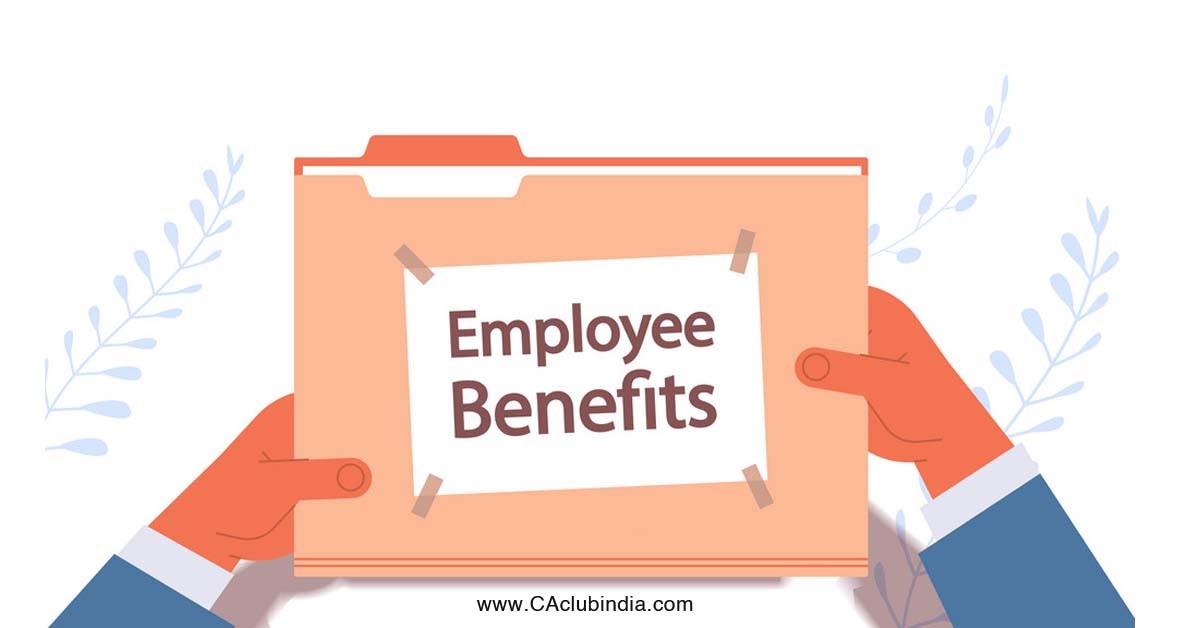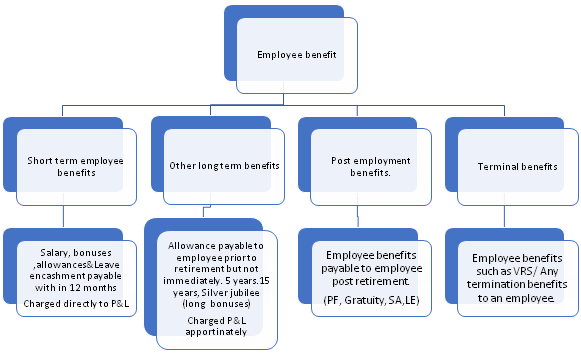1. Applicability
All benefits payable to employees are covered under Ind AS 19 except benefits given to an employee by the issue of shares, since Ind AS 102 covers share-based payments separately, hence, this part has not been considered under Ind AS 19 - Employee Benefits.

2. Types of employee benefits
Typically, there are four types of employee benefits that are considered in this standard.

3. Bifurcation of Post-employment benefits
Post employments are bifurcated in the two plans.
- Defined contribution plan- In this company deposits PF contribution contributed by company to the EPF account and company does not hold risk of paying more than the contribution deposited in employee's PF account to EPF.
- Defined Benefit Plan: As the name indicates these are benefits which employer is contractually obliged to pay to the employee in any circumstances. Gratuity, Superannuation are best example of defined benefit plan. Company creates pool of investment for settling liability of employee by company. This is future commitment hence company must use Project unit cost method (Discounting method- bringing future cash value at current rate) as this is mandated by Ind AS 19.
4. Actuarial valuation
Ind As-19 mandates company to conduct actuarial valuation of long-term employee benefits such as long service bonus, leave cashment, Jubilee award, Gratuity, Superannuation. Previously AS-15 mandated company to conduct actuarial valuation in once in three year.
Based on the following inputs given by employer to actuary, actuarial valuations are calculated.
- Date of birth of all employees.
- Date of joining of the employee
- Average age of an employees of organisation
- Basic+D.A. or any other salary components on which gratuity, superannuation, leave encashment and other long service bonuses are dependent
- Salary growth of company.
- Discounting rate (Inflation rate): Risk free government bond rate of Interest
- ROI of asset
Based on above assumptions actuary calculates liability payable to employer and accounts department passes journal entry in the books of account. (Provision entries -Generally on the quarterly basis)
Current service cost and Interest all calculated by using discounting (PUCM) method. For example, company has defined benefit and company agrees to pay Rs. 20 Lakhs to employee after 10 years than annual benefit cost will be Rs. 2,00,000/- (Rs. 20 Lakh/10), which are discounted at the rate and Interest are added (which
5. Planned asset
To settle liability in the future, company creates pool of investment from which liability towards gratuity, superannuation is settled.
6. Change in actuary assumption
Defined benefit obligation will be changed according to change in discount rate. If liability increases than it is actuarial loss if liability decreases than it is actuarial gain. Both will be booked under Other comprehensive income.
7. Past service cost
Due to change in the internal policies of the company when employees are benefited and
8. Curtailment
In simple term, curtailment means a reduction in the benefit payable for the future to an employee.









 CAclubindia
CAclubindia

